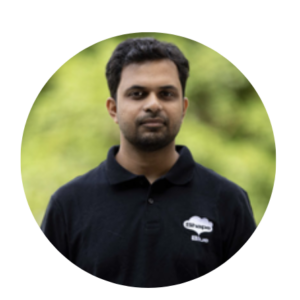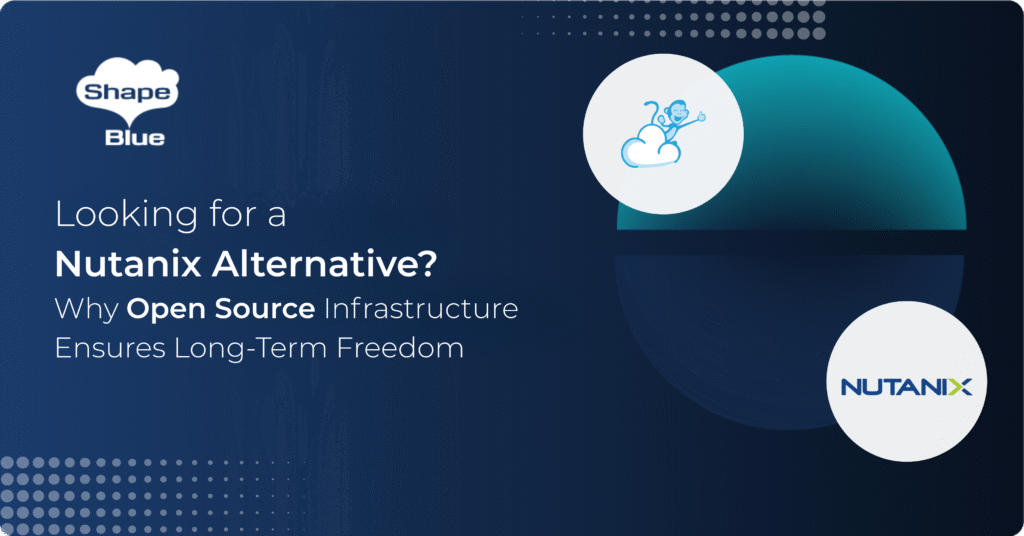The ShapeBlue team is excited to be participating once again at the CloudStack Collaboration Conference! Taking place in the vibrant city of Madrid, Spain, from November 20-22, the event is set to be another #CSCollab to remember. The first day will kick off with a hackathon, followed by two days filled with sessions and workshops, all focused on Apache CloudStack. Click the button below to view the agenda!
At ShapeBlue, we believe contributing to the community is vital for fostering collaboration, innovation, and growth within the CloudStack ecosystem. That’s why we have committed to the agenda (now closed), become a diamond sponsor and helped with the event’s organisation. It is also great to see so many organisations around the globe investing their resources into the project, with the same belief as us!
This blog highlights the sessions our team members will be hosting. If you haven’t registered yet, there’s still time to join us and the community in Madrid!
Our Team’s Sessions
What is New in Apache CloudStack, Rohit Yadav, VP of Engineering

Rohit’s talk will be an in-depth session on the latest advancements in Apache CloudStack, with a special focus on the exciting new features and improvements in the 4.20 release. As one of the leading open-source cloud management platforms, CloudStack continues to evolve to meet the needs of modern cloud infrastructures. This session will cover key updates that enhance functionality, scalability, and user experience, empowering cloud operators and developers alike. Rohit will explore the cutting-edge enhancements introduced in version 4.20, including new integrations, performance improvements, and security updates.
Scaling CloudStack to 100K Hosts and Millions of Instances, Abhishek Kumar, Software Engineer

Abhishek will discuss the why, how, and what of an exciting CloudStack scalability project aimed at significantly expanding its capacity to support 100,000 hosts and millions of VMs, volumes, networks, accounts, and domains. Explore CloudStack’s current scalability limits and assess how much further we can push its boundaries. Discuss the innovations, challenges, and strategies required for CloudStack to thrive in hyper-scale environments, and consider what it would take to achieve this ambitious level of performance and reliability.
VMware/KVM to CloudStack/KVM Migration – tools and options within CloudStack, Andrija Panić, Cloud Architect

In this talk, you will learn how CloudStack can help you import/migrate VMware/KVM instances/volumes to CloudStack and what options there are for operators to migrate those external workloads.
Enhancements to CloudStack Kubernetes Service, Pearl Dsilva, Software Engineer

With growing popularity of the CloudStack Kubernetes Service, efforts have been made to further improve this plugin and provide more flexibility. As of ACS 4.21, CKS will support deploying clusters with custom templates, with the ability of configuring different offerings and templates for different Kubernetes node types. It will also have support to add external nodes (VMs / bare metal hosts) as worker nodes to a pre-created CKS cluster. To adapt to production standards, CKS will now support unstacked ETCD as well and will also have a CNI plugin framework which will provide users the flexibility to use a CNI of their choice. In this talk, Pearl will also delve into the CloudStack CSI driver and it’s integration with CloudStack.
Management Server Maintenance in CloudStack, Suresh Anaparti, Software Engineer

In this session, Suresh will brief the audience on a new feature “Support for Management Server Maintenance in CloudStack”, which is set to be included in the upcoming release. This feature enables admins and operators to keep the management server in maintenance mode for patching or to apply any updates. He will also cover how the host agents connect to other available servers while preparing for maintenance, along with the introduction of new APIs.
Routed Mode: Static and dynamic routing, Wei Zhou, Software Engineer

In this session, Wei will discuss the ROUTED mode for IPv4 networks, coming in the CloudStack 4.20 release. In ROUTED mode on isolated networks and VPCs, the CloudStack VR no longer provides Source NAT, allowing for end-users to create purely routed networks, significantly improving network bandwidth and potentially allowing for public IPs to be allocated to user VMs without operator intervention. Simple dynamic routing introduces dynamic BGP capabilities to ACS, facilitating the use of ROUTED mode networks by automatically peering BGP sessions with upstream routers, thus removing from the cloud provider the onerous task of setting static routes on upstream routers.
External Deployment Integration in CloudStack, Harikrishna Patnala and Alexandre Mattioli

The CloudStack external deployment integration enables the deployment and management of external workloads such as baremetal servers, non-ACS VMs, and SaaS stacks directly from Apache CloudStack (ACS). This talk will explore the design, development, and practical utilization of the framework, showcasing its capabilities in managing diverse infrastructure and simplifying multi-environment operations. Attendees will gain a deeper understanding of how this integration enhances the flexibility and scope of ACS. This framework is set to be released with Apache CloudStack 4.21.
GPU as a first class feature in CloudStack, Vishesh Jindal, Software Engineer

With the rise of AI, VDI, cryptocurrency mining, simulations, and advanced graphics processing, the demand for GPU resources has surged dramatically. However, Apache CloudStack currently lacks first-class support for GPUs. This talk will cover the current state of GPU support in CloudStack, the challenges of managing GPU resources, and proposes a feature design to make GPU a first-class CloudStack resource. Attendees will gain insights into the technical hurdles and potential solutions to bring seamless GPU support into their IaaS platform.
Shared FileSystem as a First Class Feature, Abhisar Sinha, Software Engineer

Abhisar’s talk is dedicated to new feature Shared FileSystems. This is a fully managed file storage service, offering a simple way to create and use file systems that can be accessed by multiple instances simultaneously.
A New CloudStack Driver Model, Rohit Yadav, VP of Engineering

This talk proposes an exciting “Mother of All Plugins” framework for Apache CloudStack. This innovative meta-framework empowers vendors, operators, and admins to extend CloudStack’s capabilities using any programming language of their choice and offer more flexibility and speed for developing custom features and extensions. Join Rohit to discover how this game-changing driver model can empower you to customise CloudStack faster, giving you a competitive edge in driving cloud innovation and meeting evolving demands.
The Apache CloudStack Governance Model, Daan Hoogland, Application Architect

The Apache CloudStack project is part of the large portfolio of ASF projects and acts as an independent software project under the Apache umbrella. It is bound by the Apache bylaws, but also has its own bylaws and traditions. As part of the ASF it is bound by an honour code of inclusivity. It is also a consent based democratic entity. What this all means will be explained in this talk.
NSX Integration on CloudStack, Nicolas Vazquez, Software Engineer

In this talk, Nicolas will go through the VMware NSX integration on Apache CloudStack, to be introduced on version 4.20 as a CloudStack plugin. The NSX plugin introduces NSX 4 as a network service provider in CloudStack allowing users to create and manage Virtual Private Clouds (VPCs) in CloudStack utilizing NSX SDN, orchestrating the network functionalities such as: routing, port forwarding, load balancing, DNS, DHCP, ACLs and more.
Backup & Recovery with CloudStack, Jithin Raju, Cloud Architect

The ability to reliably back up and restore cloud instances is critical for maintaining operational continuity and safeguarding against data loss. This session provides an overview of the backup and recovery options available within CloudStack. The talk includes Backup and Recovery framework and providers: Veeam, Dell NetWorker, Dimsi Backroll, and NAS. This session is ideal for CloudStack administrators, IT managers, and anyone responsible for data protection in cloud environments.
Evaluating Cloud Costs: On-Premise CloudStack vs. Hyperscalers, Marco Sinhoreli, Technical Marketing Manager

Choosing between running your own cloud infrastructure and using services from major providers like AWS, Azure, or Google Cloud can be a tough decision. In this talk, Marco will walk you through a comparison of the costs involved in both options using a Cloud Cost Calculator and Pricing Report. He will share insights into how these costs stack up over time, based on a case study of a mid-sized company. If you’re considering whether to stick with a public cloud or move to an on-premise setup, this session will give you a clear picture of the financial implications and help you make a more informed choice.
Jamie had been involved in marketing for 3 years prior to joining the company. He is heavily involved in the marketing activities for both ShapeBlue and Apache CloudStack. In his free time, Jamie likes training MMA and rugby.





